The original Lumix G9 was unveiled in 2017. It was Panasonic’s answer to a high-end photography-centric camera, in contrast to the more video-centric GH series, although the G9 still packed very good video capabilities.
Six years later, the company shows it hasn’t given up on Micro Four Thirds yet by releasing the G9 II. It has a new sensor, phase detection autofocus, and a plethora of other upgrades, including stunning specs for video.
In this comparison preview, I’ll walk you through the most important differences between these two cameras to see if the older (and much cheaper) model is still worth considering, or if it’s time for you as a G9 owner to upgrade.
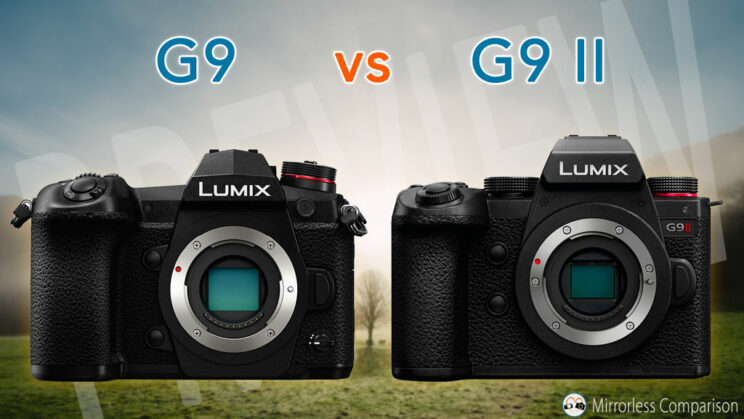
Ethics statement: the following is based on our personal experience with the G9, and official information for the G9 II. We were not asked to write anything about this product, nor were we provided any compensation of any kind. Within the article, there are affiliate links. If you buy something after clicking one of these links, we will receive a small commission. To know more about our ethics, you can visit our full disclosure page. Thank you!
1. Sensor
The G9 features an older 20.4MP sensor, whereas the G9 II gets the same new 25.2MP sensor first seen in the GH6, although the version found on the G9 II has been revised at both a hardware and software level, according to Panasonic (source: DPReview).
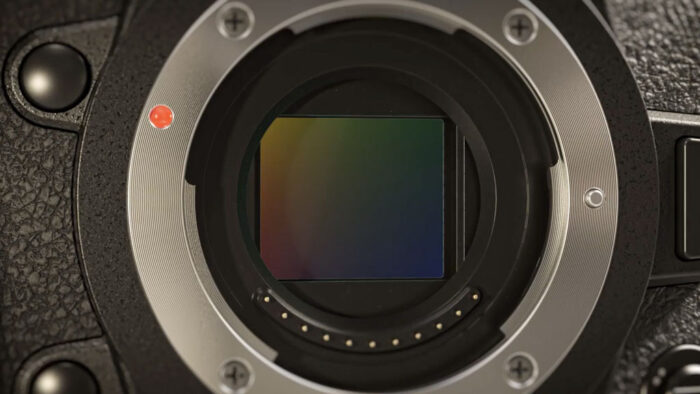
The ISO range is slightly different concerning the base normal standard, which is 100 on the G9 II and 200 on the older camera. The maximum ISO is 25,600 on both, and the new camera also offers a “low” ISO 50.
Furthermore, the G9 II sensor has a dual output gain that can be read at the same time and combined to improve the dynamic range. According to Jordan and Chris at PetaPixel, this has been improved over the GH6, which was disappointing below ISO 800.
2. Leica Monochrome profile
The G9 II features a new Black and White profile called Leica Monochrome, which produces brighter highlights and stronger contrast compared to previous profiles like the L.Monochrome D. The profile was developed in partnership with Leica, a long-standing collaborator of Panasonic.
3. Autofocus
The biggest headline is undoubtedly the addition of phase detection autofocus on the G9 II with 779 points, a first in the Panasonic Micro Four Thirds lineup, and a (long-awaited) upgrade.
The original G9 uses the older DfD contrast detection AF system with 225 points. Note that in single AF, the Mark II model uses DfD too (315 points) but switches to phase detection in C-AF.
Both cameras can recognize people (body, head, eyes) and animals, but the G9 II brings more advanced “A.I.-powered” capabilities. It can recognize the eyes of animals, as well as cars and motorcycles. The improved algorithm should also result in faster and more precise tracking.
4. Drive Speed
The original G9 is a capable camera when it comes to continuous shooting. With the mechanical shutter, it can go as fast as 12fps or 9fps with C-AF. Switch to the electronic shutter, and it can reach speeds of 60fps (AF locked on the first frame) or 20fps with C-AF.
The G9 II pushes the boundaries. With the mechanical shutter, it goes up to “only” 14fps (10fps with C-AF), but with the electronic shutter, you can work at 60fps with continuous autofocus or 75fps with Single AF.
The buffer is better as well: up to 75fps, the G9 II can record 200 frames (RAW or JPG). In contrast, the G9 can manage about 50 images at 20fps.
Additionally, both cameras offer a Pre-burst mode, where you can save images before the button is fully pressed. Obviously, the faster drive of the G9 II means you can preload more images before the shutter is released.
Lastly, the original G9 also features the 4K and 6K Photo modes, working at 60fps and 30fps, respectively. These are special drive modes that actually record 4K or 6K videos in the native 4:3 aspect ratio and let you save any frame you want into an 8MP or 18MP JPG.
The advantage of 4K/6K Photo over the normal drive mode is that the buffer is basically unlimited because you’re recording a video. Many extra features are linked to this functionality: there is a dedicated Pre-Burst mode, as well as the Post Focus option (select the focus point after recording the footage) and Light Composition.
Panasonic doesn’t seem interested in the 6K and 4K photo modes anymore and hasn’t included this function on the new G9 II.
5. Stabilisation
Both cameras feature five-axis image stabilization, but the G9 II has a better rating.
With the sensor alone, it can compensate up to 8 stops. With Dual IS (sensor + optical stabilization), it’s slightly lower at 7.5 stops. According to Panasonic, this discrepancy is due to the fact that they reached the physical limits of lens-based optical stabilization. However, Dual IS should be able to provide 7.5 stops of compensation at longer focal lengths, whereas in-body stabilization works at its full potential with shorter focal lengths.
In contrast, the G9 has a rating of 6.5 stops with Dual IS (data about sensor-only performance is not available).
The new camera has an option named I.S. Status Scope, which displays a reference point on the screen to show the amount of camera shake.
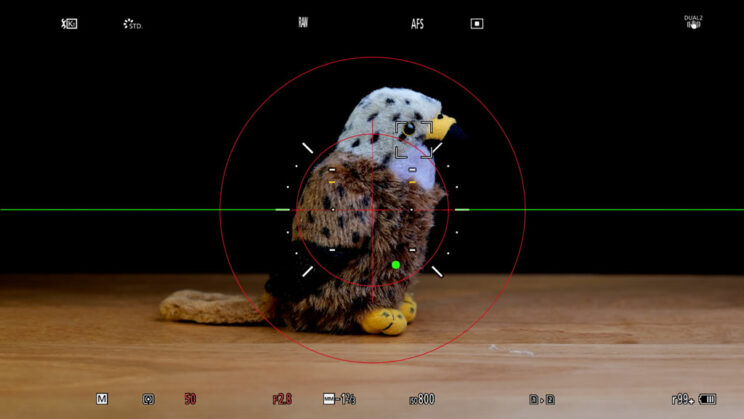
For video, they both offer additional settings such as electronic stabilization and another one to make static shots more stable (called IS Lock on the G9, Boost IS on the G9 II).
I have yet to try the G9 II, but the original model always delivered great performance, allowing me to take images at shutter speeds as slow as 4s (with a small keeper rate though) using a wide-angle lens. The performance is pretty good for video as well, especially when paired with a Dual IS compatible lens. See the video below made entirely with the 200mm F2.8 and TC 1.4x.
6. High Resolution mode
Both cameras use sensor shift technology for another purpose: the high-resolution mode. They move the sensor by half a pixel in between shots and capture 8 consecutive images that are then composited in-camera to create a high-resolution file: 80MP for the G9, 100MP for the G9 II.
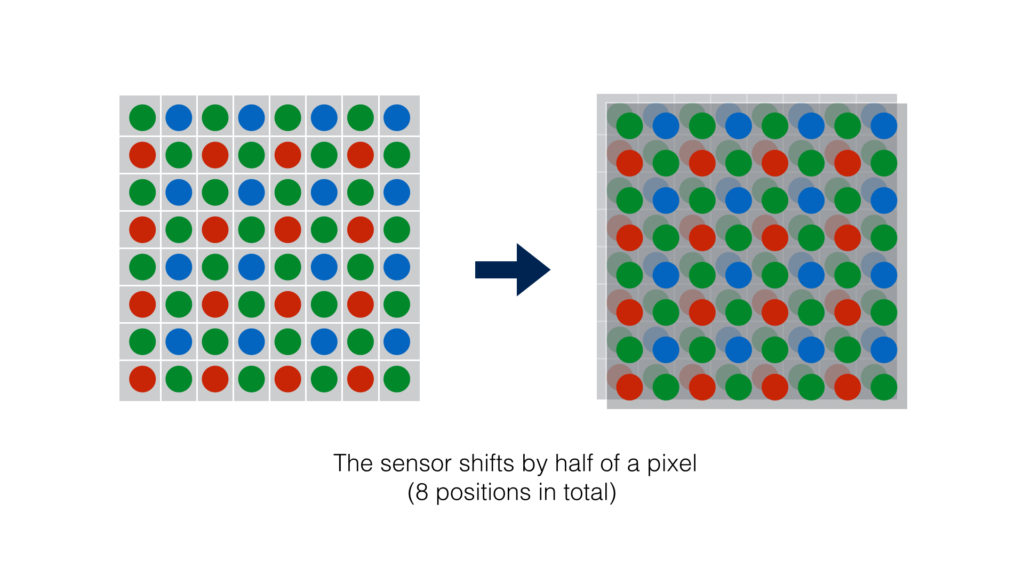
Both products give you the option to correct movements inside the frame, such as a person walking in the background or a bird flying in the sky.
The biggest difference is that the G9 Mark II can work handheld, meaning that the faster processor is capable of correcting small camera motion. On the original G9, a tripod is always required.
7. Video
The G9 was a capable mirrorless camera for video at the time, with 4K up to 60p and excellent color science. Firmware updates brought several improvements, including internal 10-bit 4:2:2 recording (up to 30p).
Being an older model, the camera has some limitations: 4K 50/60p can only go on for 10 minutes, and 4K 30p has a limit of 30 minutes per clip.
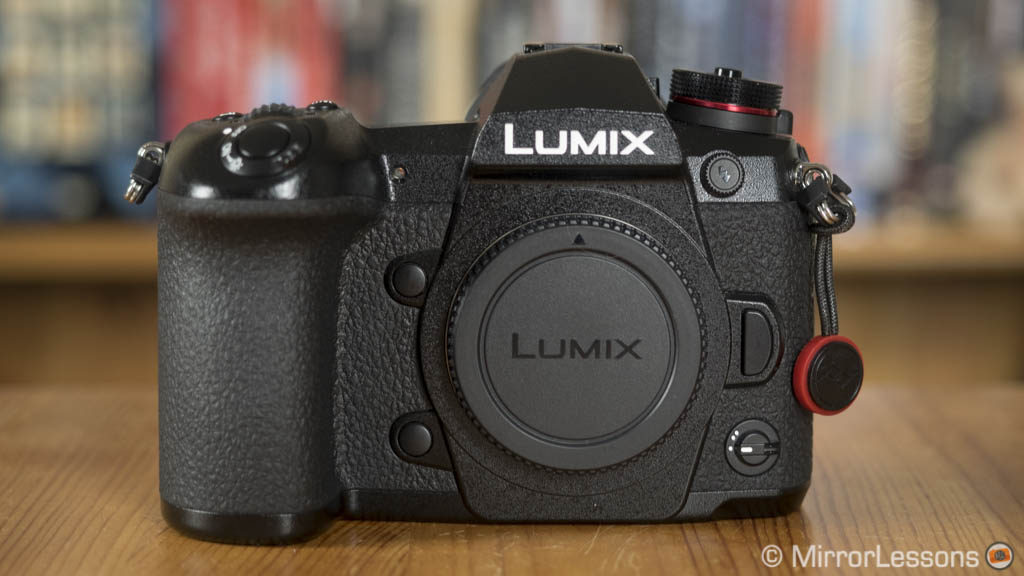
The G9 II brings many new upgrades that are similar to the GH6 video-centric flagship. You get 5.8K “open gate” (4:3 aspect ratio) up to 30p, and 5.7K up to 60p (17:9). In 4K, you can record up to 120p. Naturally, 10-bit is available for internal recording, and you also have the option to record in Prores. There is an anamorphic option and no restrictions concerning the length of the video clips.
An additional advantage for the G9 II is the presence of the V-Log profile. On the original G9, you can get the lighter V-Log L, but only with a paid upgrade.
Both cameras have 3.5mm microphone and headphone connections, as well as a full size HDMI.
Last but not least, the G9 II allows you to upload your own Look-Up-Tables (LUTs) and apply them to the recorded footage.
8. SSD Recording
A notable feature of the G9 II is the ability to record photos and movies directly onto an SSD drive using the 10Gbps USB-C port. This can be particularly useful, especially for video work, when you need to operate for extended periods and want to circumvent the limited capacity of SD cards. Additionally, it allows you to connect the SSD drive to your laptop and begin editing immediately, eliminating the need to transfer the files first.
9. Design
You would expect the G9 II to resemble the original model when it comes to body design and controls, but that is not the case here. The new camera has basically the same body as the S5 II full-frame camera, minus the built-in cooling fan. I guess using the same body construction simplifies the production process, as well as perhaps being more cost-effective.
This means there are quite a few differences to talk about, but not so much concerning the dimensions. The size remains similar, with the original model being slightly wider, and the new model taller:
- G9: 136.9 x 97.3 x 91.6 mm, 658g
- G9 II: 134.3 x 102.3 x 90.1 mm, 658g
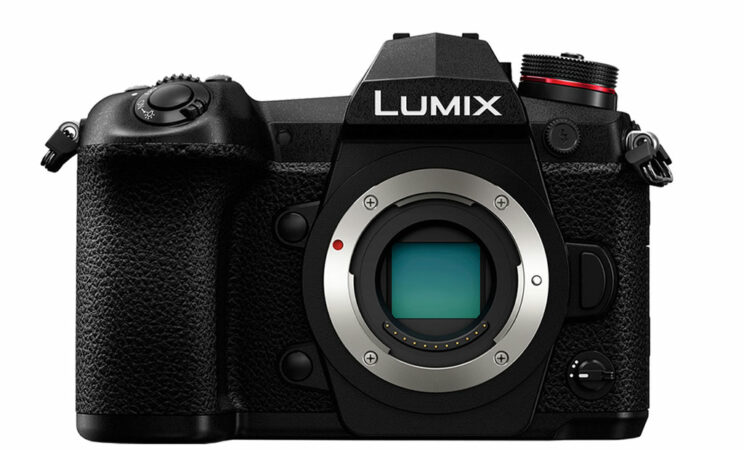
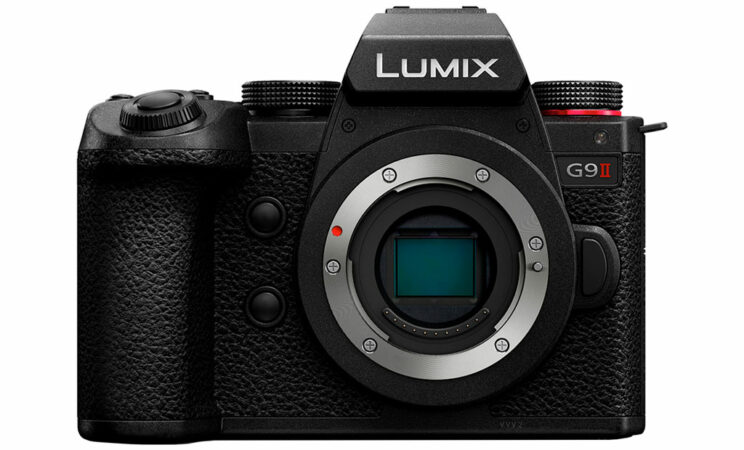
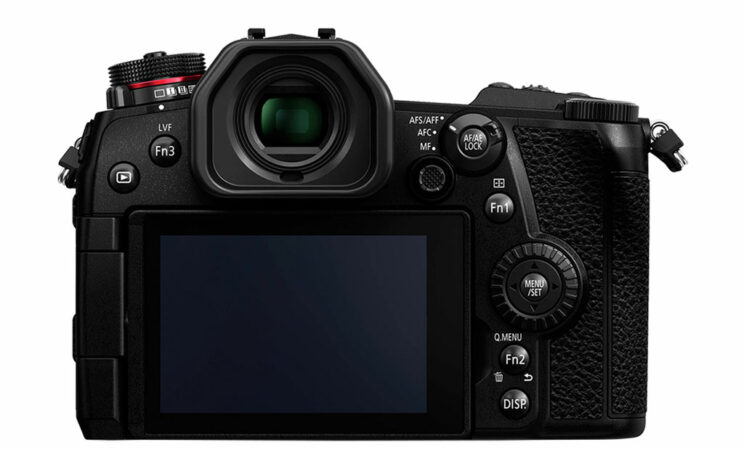
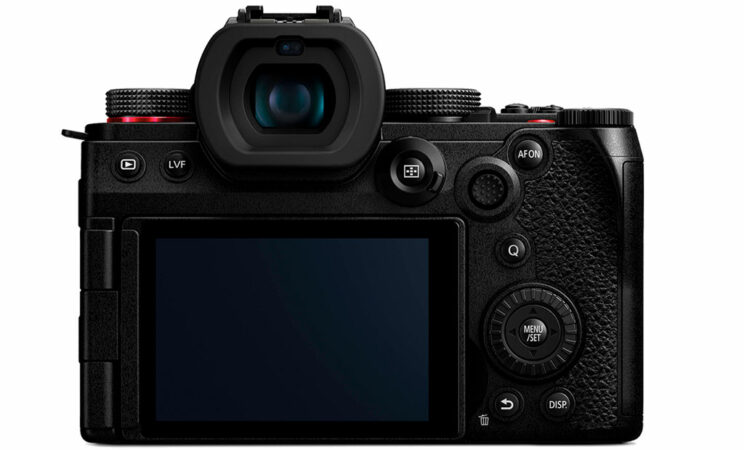
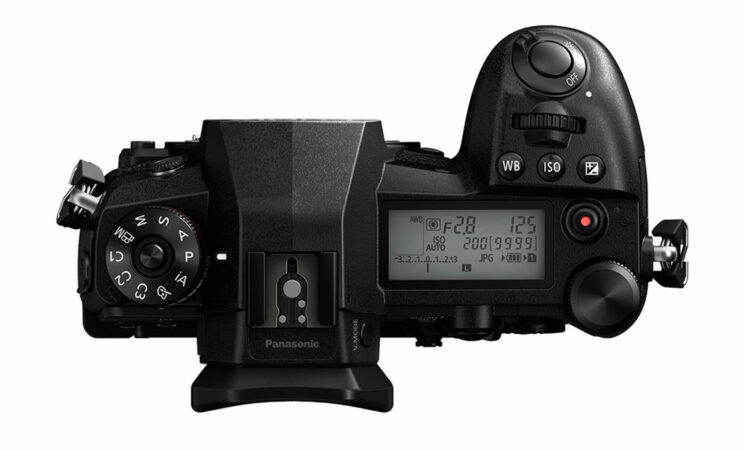
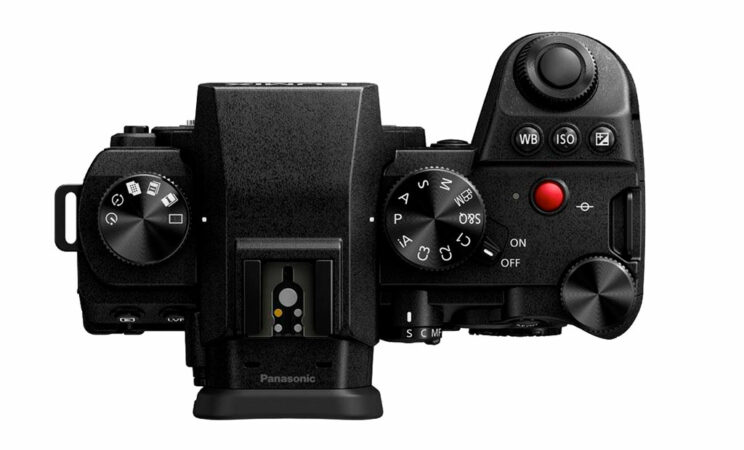
Surprisingly, there are quite a few things you lose with the G9 II, such as the customizable lever at the front, the status LCD screen on top, and the center lock button for the shooting mode dial. On the other hand, the new model has a larger and more ergonomic AF joystick. Other buttons and dials have been slightly relocated or redesigned.
The viewfinder is the same concerning the panel (0.5-inch OLED with 3.69M dots, 120Hz refresh rate), but the magnification is smaller on the G9 II: 0.78x. On the original camera, you could choose between three modes, with the largest being the equivalent of 0.83x.

The rear LCD has the same multi-angle mechanism. It is touch-sensitive, but the G9 II version has more resolution: 1.84M vs. 1.04M dots.
There are two SD UHS-II card slots on each camera.
Finally, we have the batteries, which are different, with the one on the G9 II having a bit more power. The CIPA rating is similar, though:
- G9: 400 images (LCD), 380 images (EVF)
- G9 II: 370 images (LCD), 390 (EVF)
10. Price
The original G9 has seen some amazing discounts in the last few years, which often made it one of the bargains you could find on the market. At the time of writing this article, you can find it for $900, £1000, or €1000 (body only).
The G9 II is much more expensive to buy by comparison, starting at $1900, £1700, or €1900.
Reminder: the links below are affiliate links. If you decided to buy something after clicking the link, we will receive a small commission.
Check price of the Panasonic Lumix G9 on
Amazon | Amazon UK | eBay | B&H Photo
Check price of the Panasonic Lumix G9 II on
B&H Photo
You may also be interested in:
Conclusion
I have tested the G9 multiple times. The first, in-depth review, made me appreciate its color profiles, its ergonomics and button layout, the complete touch screen experience, the great continuous shooting speed, and the nice video quality. At the time, it was a competitive camera that was only let down by the infamous DfD autofocus system. To be fair, it was not terrible and gave me good results in a variety of situations, including sports and motorsports. However, with fast subjects such as birds in flight against a busy background, the camera struggled to deliver a decent keeper rate. I tested the G9 with every major firmware release, hoping for a “miracle,” but that never materialized.
Naturally, the most important update with the G9 II is the phase detection autofocus system. I’ve already tested the S5 II, Panasonic’s first camera with PDAF, and while it’s not on par with what Canon, Sony, or Nikon can offer today, it certainly delivers more consistency, no matter which type of action you throw at it (and yes, it’s better with birds in flight).
The G9 II seems more powerful on paper in terms of sensor readout and perhaps AF calculations as well, so I’m hopeful it can outperform its full-frame sibling and be a serious competitor to the OM System OM-1, which is currently the Micro Four Thirds camera that has ranked higher in my birds in flight test.
Autofocus aside, the difference in price is significant in 2023, so you must see where your priorities lie. For sure, the G9 II is a great upgrade on almost every front, except the ergonomics perhaps, where it lacks a few neat things the original body has.
Reminder: the links below are affiliate links. If you decided to buy something after clicking the link, we will receive a small commission.
Check price of the Panasonic Lumix G9 on
Amazon | Amazon UK | eBay | B&H Photo
Check price of the Panasonic Lumix G9 II on
B&H Photo




